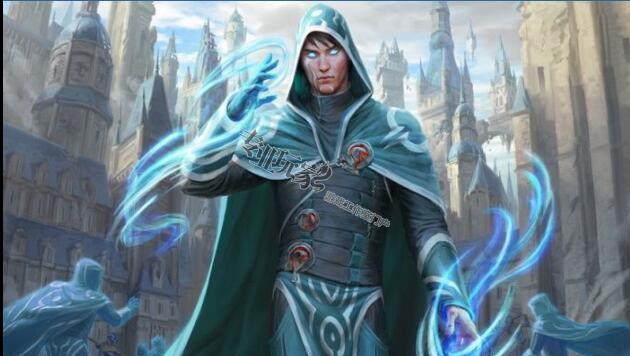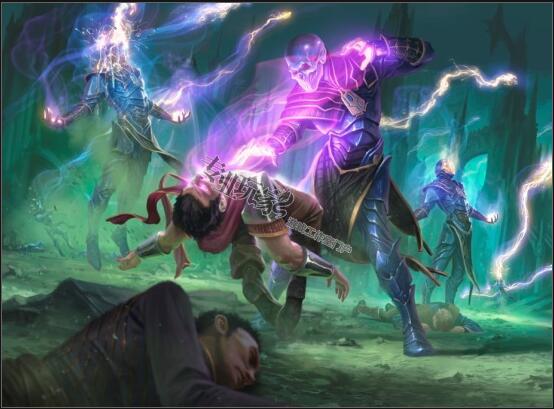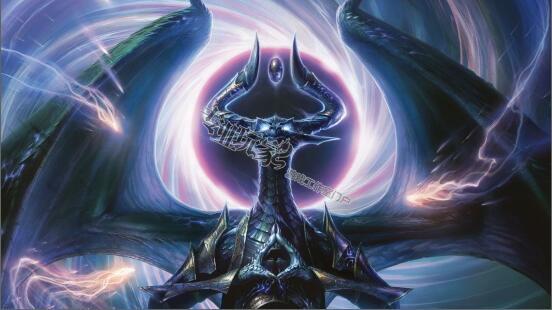《魔术:聚会》创造的外观-艺术的魔术舞台
2019-10-07
1328

魔术:聚会本身被认为是我们这个时代最复杂的游戏之一。有这么多的互动,触发和影响,可以发生在任何一个回合,魔术本身的复杂性是值得称赞的。然而,经常被旁观者忽略的是MTG的艺术。Magic Arena的目标是将艺术数字化,但这是如何实现的呢?
那些将这些游戏制作者的愿景呈现出来的艺术家往往会被你的普通粉丝所忽视。然而,许多铁杆魔术玩家知道这些艺术家,因为他们可以讲述的细节思想抓住。那么魔术竞技场团队是如何在创造艺术的同时,将纸游戏的艺术运用到数字产品中的呢?我们能够与Cynthia Sheppard交谈,她是《魔法:聚会》的艺术总监和插画师。
MMORPG:你当魔法师艺术家有多久了?
辛西娅·谢泼德:我在2009年开始为D&D的《巫师》做自由插画师,第二年开始为《魔法》工作。我现在的头衔是魔术TCG的高级艺术总监,我在2015年2月加入公司内部。
MMORPG:当涉及到为魔法创造艺术时,这个过程是如何进行的?既然我们知道每个场景都是在发布前几个月到几年精心制作的,那么艺术家们需要多少指导和准备时间来创作他们的作品呢?
CS:艺术大约在它以一套卡片形式发行前一年就被委托了。每一张卡片的插图都是由这套卡片的首席作者、设计师和艺术指导开始的,他们浏览每一张卡片,并讨论它可能是什么——一个有很多开放可能性的有趣练习!我们每个人在早期阶段都有自己的目标,例如我们可能想要一个目标动作量,或一定数量的显示骑士的纸牌,或X数量的展示特定地点的棋子。我们解决了那个难题之后,首席作家将写艺术说明。然后,艺术总监与作者一起工作,磨练他们,并为每个任务选择艺术家,给艺术家的任务细节,并直接与他们工作的草图和最后审查超过六周的时间。
MMORPG:当决定每张卡上的艺术时,法师提供了什么样的方向?
作者的艺术描述,艺术家的作品包括基本信息,如艺术维度,其中可能还包括参考世界指南或人物形象。我们试图给予艺术家创作的自由,用他们自己独特的手法来解决挑战,同时根据卡片的功能给予指导。最终,我们的艺术总监会根据我们认为能够提供最佳纸牌机制或特定角色的视觉解释的人,为那些艺术描述手动选择艺术家。
MMORPG:对于Arena来说,将这些令人惊叹的作品从硬纸板带到数字飞机上有什么挑战吗?另外,原创艺术家们是如何将他们的愿景搬上银幕的呢?
CS:在我写这篇文章的时候,所有的卡片插图都是以TCG为原型的。在屏幕上看起来充满活力和清晰的东西并不总是能很好地转化为印刷油墨,但反过来却更容易。我们并不要求艺术家是传统的还是数字的,但是图像和舞台团队非常擅长将任何图像转换成一个在数字空间中看起来像在家一样的版本。

MMORPG:就每一款游戏的主题而言,比如即将到来的《埃尔德雷恩的王座》,创造这些故事发生的世界是什么样的?
CS:世界建设有多个阶段,从一个中心主题或多个主题的组合开始。与创作艺术描述类似,很多早期的作品都是在一个房间里完成的,主角和其他人会讨论基于这些主题的场景。我们把所有的想法都写在白板上,然后开始选择可靠的方向——或者一套规则,真的——成为我们的路标。以Eldraine为例,早期法院的工作始于骑士法典的重新格式化,以适应五种颜色。
MMORPG:多少协作的作家和艺术家必须确保视觉和风格是至少有点一致因为不同的艺术家可能解决相同的字符,但在不同卡(例如Nicol-Bolas上描绘自己的旅法师卡,然而也描述多个对邪恶Despark和交付等)?
CS:我们每年都与技术精湛的艺术家合作,创作出成千上万件——堆积如山的——概念艺术作品。例如,每一个主要的平面都有它自己的世界指南,详细描述了背景的基调、环境、生物、各种人和奇幻种族的外貌,以及任何与该平面或它的世界居民相关的主要形状语言或图案。一本世界指南通常是200-300页的艺术和写作…我们每年至少做三页!
MMORPG:虽然一张纸牌可能会有完整的艺术版本,特别是现在MTG Arena几乎支持每一张纸牌,但要确保纸牌所讲述的故事是基于非完整的艺术版本有多困难呢?
CS:我们的艺术描述包括框架的细节,通常还有模板,它概括了艺术的重点需要放在哪里。例如,在一张完整的艺术卡片上,艺术家需要知道图像的哪些部分将被裁剪掉,或者被文本或框架元素覆盖,这样他们就可以计划将所有重要的插图放在艺术框的正确部分。其他的都是附加的。
MMORPG:在接近他们的艺术作品之前,艺术家们是否已经完整地了解了飞机的故事,尤其是那些直接描述故事场景的卡片?

CS:通常不会,但这取决于场景。故事是在美术制作的同时进行的,甚至是在美术制作完成之后,尽管有时我们的作者会有一些特定的节奏(比如我们知道Vitu Ghazi推倒了Nicol Bolas的雕像……让我们看看!)
通过安娜斯坦鲍尔/海岸的巫师特色图像
专业玩家网为游戏工作室提供游戏项目、游戏工作室辅助工具、游戏工作室国内外游戏资讯。
原文:
Magic: The Gathering itself is known the world over as one of the most complex games in our age. With so many interactions, triggers and effects that could happen on any turn, Magic itself is lauded for that complexity. However, often missed by the casual onlooker is the art of MTG. Magic Arena aims to bring that art alive digitally, but how does that happen?
The artists who bring the vision of these gamemakers to light oftentimes are overlooked by your casual fan. However, many hardcore Magic players know these artists as well as they can recount the details of Thoughtseize. So how did the Magic Arena team go creating the art, as well as implementing the art of the paper game into the digital product? We were able to speak to Cynthia Sheppard, Sr. Art Director and Illustrator for Magic: The Gathering about this process a little bit.
MMORPG: How long have you been an artist for Wizards/working on Magic cards?
Cynthia Sheppard: I began working as a freelance illustrator for Wizards in 2009 for D&D, and began working for Magic the following year. My current title is Sr. Art Director for the Magic TCG, and I joined the company in-house in February 2015.
MMORPG: When it comes to creating art for Magic in general, how does the process work? Since we know each set is crafted months to years in advance of its release, how much direction and lead time do the artists have to create their work?
CS: Art is commissioned roughly a year prior to its release in a card set. Each card illustration begins with the set’s lead writer, designer, and art director going through each individual card and talking through what it could be- a fun exercise with lots of open possibility! We each have goals for the set that we address at that early stage, for example we might want a target amount of action, or a certain number of cards showing knights, or X number of pieces that showcase a specific location at common. After we work out that puzzle, the lead writer will write art descriptions. The art director then works with the writer to hone them, and selects artists for each assignment, gives the artists assignment details, and works directly with them on sketch and final review over a six-week period.
MMORPG: What kind of direction does Wizards provide when determining the art on each card?
CS: The writers’ art descriptions that the artist’s work from include basic info like art dimensions, which may also include references to a World Guide or character images. We try to give artists freedom in composition and to solve challenges in their own unique hand, while giving guidance based on what the cards do. Ultimately, we art directors hand-select artists for those art descriptions based on who we think will provide the best visual interpretation of card mechanics or specific characters.
MMORPG: For Arena Specifically, are there any challenges in bringing these stunning works from cardboard to the digital plane? Additionally, how involved are the original artists in bringing their visions to life on screen?
CS: At the time I’m writing this, card illustrations are all still commissioned with the paper TCG in mind first. What looks vibrant and clear on screen doesn’t always translate well into printed ink but is easier the other way around. We don’t mandate whether artists work traditionally or digitally, but the Imaging and Arena teams are fantastic at translating any image into a version that looks at home in a digital space.
MMORPG: In terms of the themes of each plane, like for instance the upcoming Throne of Eldraine, what is it like to create the worlds these stories take place in?
CS: Worldbuilding happens in multiple stages that begins with a central theme or combination of themes. Similar to creating art descriptions, a lot of early work happens in a room with the leads and others talking through what a setting based on those themes could be. We get all our ideas out onto the whiteboard, and then start picking solid directions – or sets of rules, really – that become our guideposts. Using Eldraine as an example, early work for the courts began as a reformatting of chivalric code to fit five colors.
MMORPG: How much collaboration do the writers and artists have to ensure that the vision and styles are at least somewhat consistent throughout since different artists may tackle the same character, but on a different card (for instance Nicol-Bolas depicted on his own Planeswalker card, yet is also depicted on multiple others such as Despark and Deliver Unto Evil)?
CS: We work with skilled artists to create thousands of pieces -mountains- of concept art every year, which artists across multiple disciplines refer to as reference. Each major plane, for example, has its own world guide detailing the setting’s tone, environments, creatures, the look of the various people and fantasy races, and any major shape language or motifs associated with the plane or its in-world denizens. A world guide is typically between 200-300 pages of art and writing… and we do at least three per year!
MMORPG: While a card might get a full-art release, especially now that MTG Arena supports this for virtually every card, how difficult is it to ensure that the story the card is telling is accurately framed on a non-full art version?
CS: Our art descriptions include frame details, and often templates, which outline where the focus of the art needs to be. On a full-art card, for example, the artist needs to know what parts of the image will be cropped out, or covered by text or frame elements, so they can plan for all the important pieces of their illustration to live in the correct part of the art box. Everything else is additive.
MMORPG: Do the artists have a full run down of the story of the plane before approaching their art, especially for those cards that directly depict scenes in the story itself?
CS: Not usually, but it depends on the set. Story is developed simultaneously with, or even after the art commissioning, though sometimes our writers will have some specific beats in mind (i.e. we know Vitu Ghazi topples the statue of Nicol Bolas… let’s see THAT!)
Featured image via Anna Steinbauer/Wizards of the Coast
免责声明:部分内容转自其他媒体,转载目的在于为游戏工作室传递更多信息,如因作品内容、版权和其他问题请 联系客服